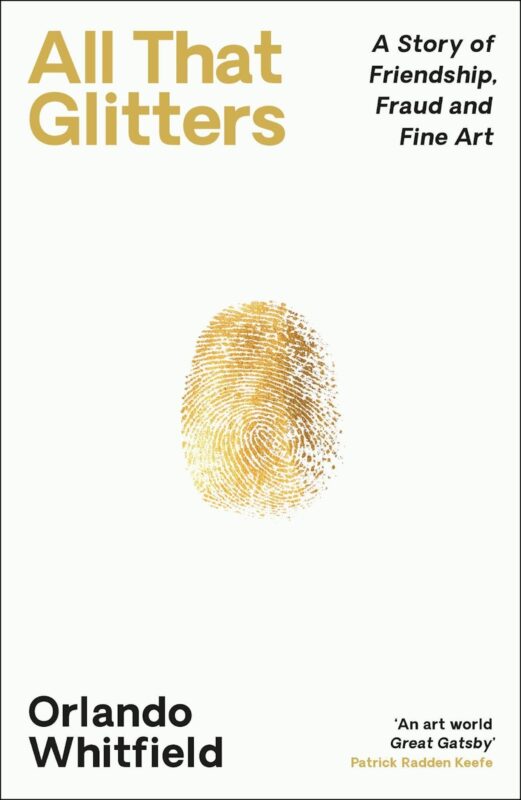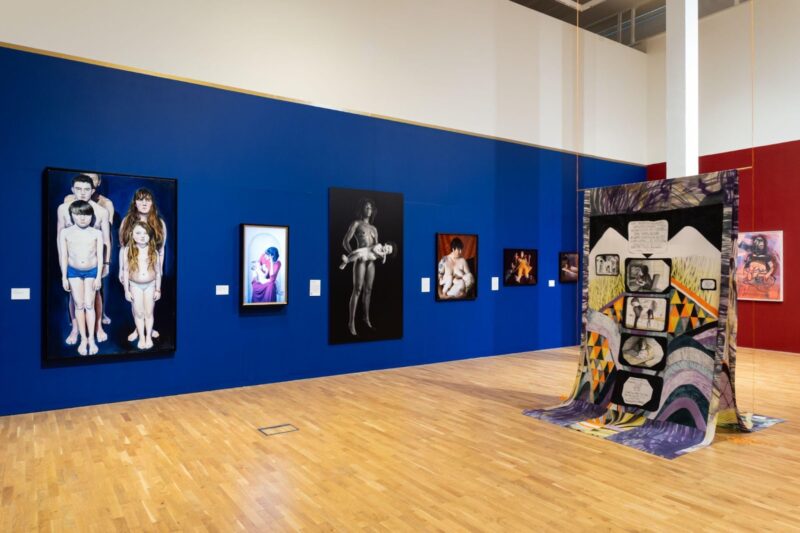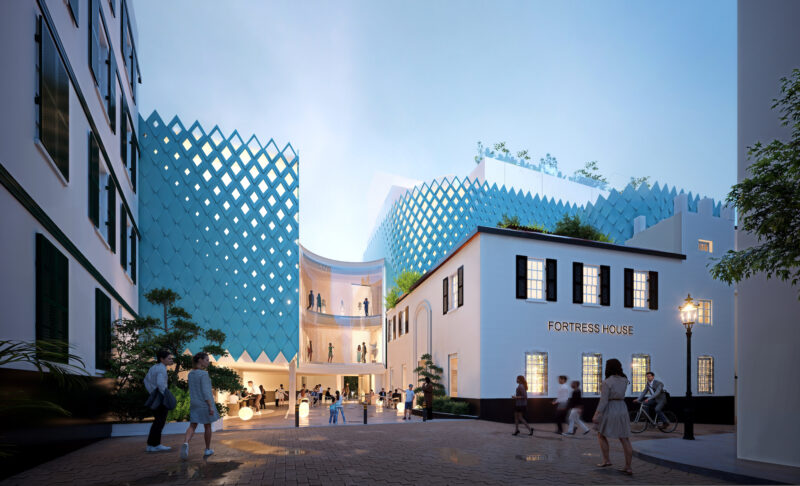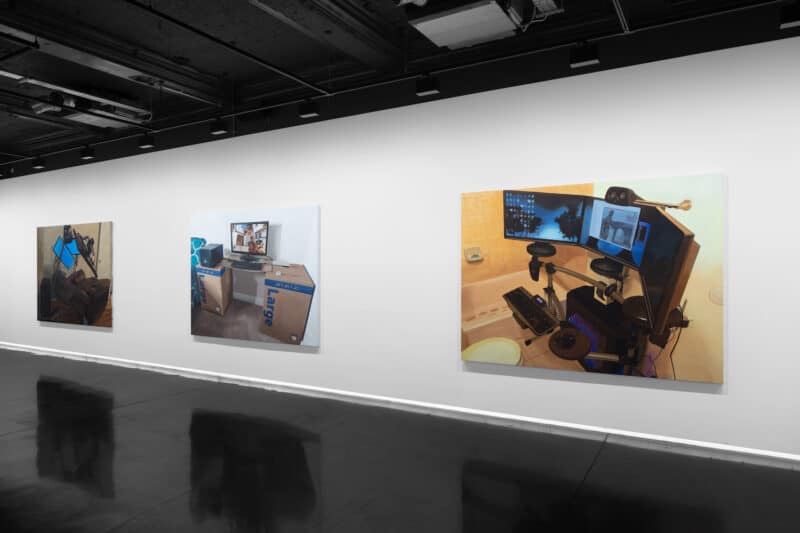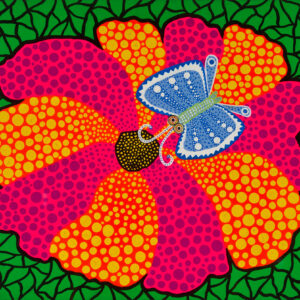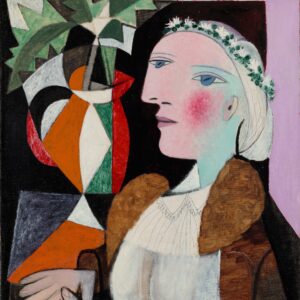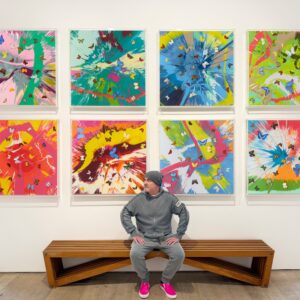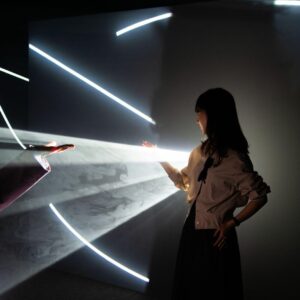To be bold: I <3 Basel (I always appreciate cities without such a touristy t-shirt). The petite Swiss city has a particularly ballsy personality and a vagabond temperament annually overshadowed by “Basel Basel” bunting (I have a love-hate relationship with those t-shirts). Aside, outside and alongside June at the Messeplatz if you wander the city you can get a sense of this character: it’s straight-laced in a nonchalant way, it’s teeming, sly and joyous. Basel embodies an art-filled way of thinking, being, here all pre-perceived expectations can be read inverted (or over-read if you are like me). An example, the youth hostel I always stay in (plug for Jugendherberge Basel — love, go stay) is one of the go-to addresses for Basel Basel believers (big bucks bunking it, I mean ?…!), in recent years I have shared a dorm with a collector frantically re-wrapping a new acquisition as well as with auctioneers, gallerists and random-Jos’ who find themselves sleeping quizzical next to the sound of champagne snores and the river Rhine. All this is to say that Basel is avant-garde in the most etymological sense of the term: leading the way in the fusion of art and everyday life (but that might just be me projecting ideals wildly).
It’s of note that my most recent trip to Basel coincided with MUSEUMSNACHT (Museums Night), 17th January, a moment in the year when the city’s museums collectively open their doors from 6pm until 2am (!). More than just an individual extra-‘late’, something with a Tatey feel, the city of Basel encourages museum-goers to hop across the city’s institutions, making public transport free as well as scheduling special shuttles between hot areas. This interconnectivity makes the cultural scene porous, provoking curiosity and discursive ventures to places unknown or new.

Personally, I planned to use the evening to catch up with my favourite museums but was quickly pulled outside of my comfort zone. After seeing a super tight Rosemarie Trockel at the Kunstmuseum (Cluster VI, Door Ajar, 2021, a recent acquisition) and viewing their Paula Rego exhibition, the first major exhibition following the artist’s death in 2022, I drifted into Antikenmuseum Basel und Sammlung Ludwig (Basel’s antiquity museum) to play detective in a True Crime-esque enquiry, before having a crêpe outside of the Cartoonmuseum. A night well had (after a mezcal sour or two).
MUSEUMSNACHT is indicative of Basel’s arty personality. It had all the vitality of the Venice Biennale’s opening week but without the fishy smell of FOMO nor desperation. It was massive and I really cannot do it justice in a ‘review’. All I can say is get booking for 2026 (Jugendherberge might have rooms with any luck).
Enough with the prelude. I want to focus on one para-exhibitionary example of the fusion of art and life which suffuses Basel. Dispersed throughout the historic city centre the public project Shop Windows in The City is not only the perfect way for folks from out-of-town to better know the place but to get a sense of the unique personality that keeps dragging me back (yes, even when the fair isn’t on).
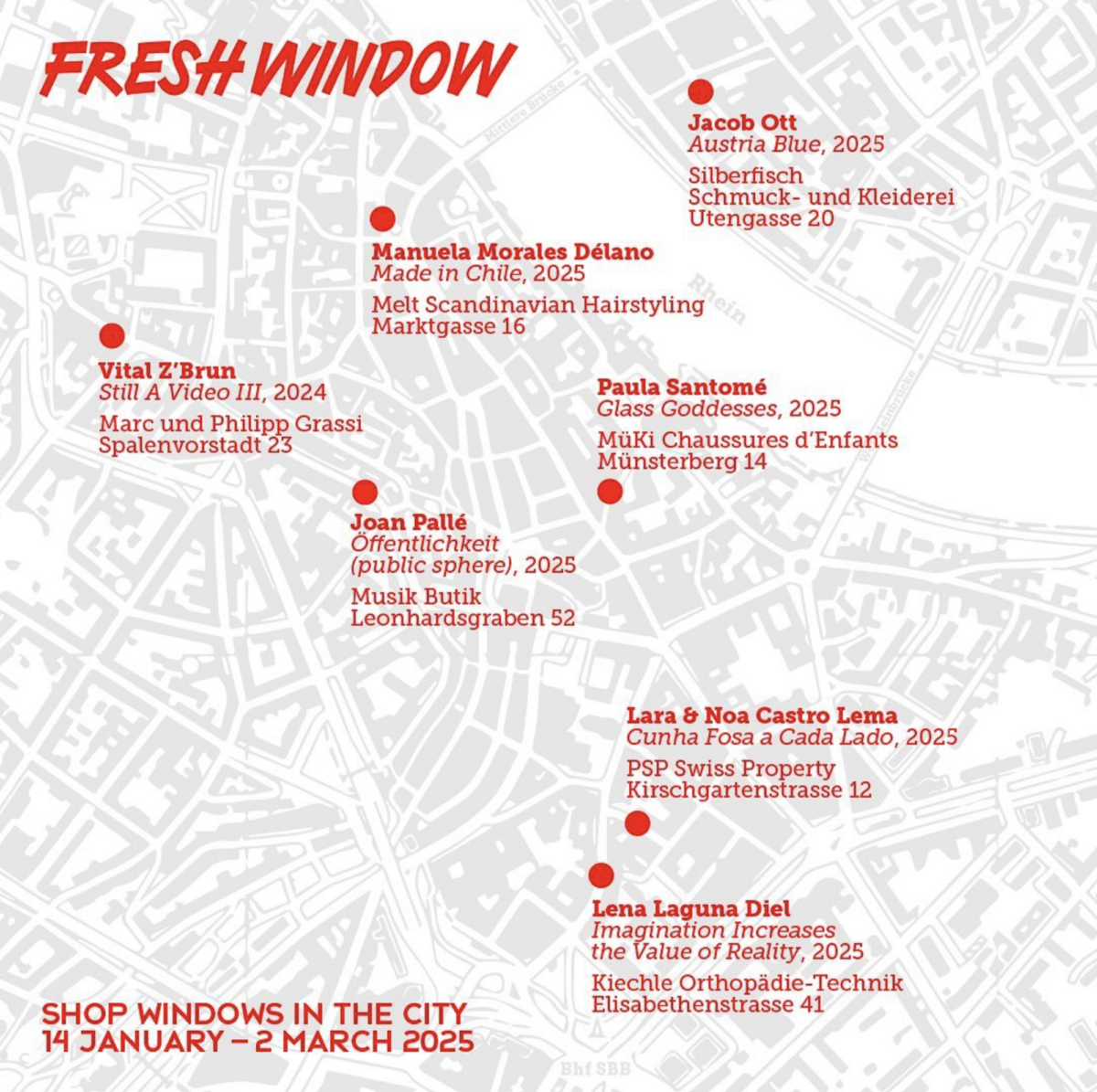
The in-public face of the Museum Tinguely’s thematic exhibition Fresh Windows: The Art of Display & Display of Art, an exhibition about the relationship between artists and shop windows (worth browsing in itself), Shop Windows in The City embraces the hum-drum shop window as a critical point of dwelling. Featuring seven new commissions by former students of the Institute Art Gender Nature HGK Basel FHNW, the exhibition intervenes in the very structures of everyday life, allowing the artists to directly dialogue with a public about key issues of our day: ecological degradation, the consistency of public space, gender norms and the influence of digital culture on our ways of being. The potentiality for shop fronts to operate in such an avant-garde manner isn’t new, as the Tinguely exhibition stresses; throughout the 20th and 21st centuries, as consumerism has become an ever-increasing presence haunting our everyday unconscious, artists have sought to appropriate such commercial spaces to challenge the faceless status quo as well as to make ends meet. Working with voyeuristic cheek, often transforming the most mundane of materials into something newly allusive, these seven window installations can be seen as contemporaneous still lifes, each beckoning allegorical readings.
That seems like a fitting segway into what I read and what I projected onto the artworks in my window stop tour of the city (apologies for my bad phone photographs…).
Shop Windows in The City, Basel Lara and Noa Castro Lema, Manuela Morales Delano, Lena Laguna Diel, Jacob Ott, Joan Pallé, Paula Santomé, Vital Z’Brun Until 2nd March 2025
STOP 1) Jacob Ott, Austria Blue, 2025 Silberfisch, Schmuck- und Kleiderei, Utengasse 20

It’s raining potatoes, all Tom Dixon-esque, tarnished bronze and gleaming. Ott’s installation is a rhizomatic (sorry for the loaded term) mass of gorged-out and glazed potato carcasses hung as lights from Silberfisch’s ceiling. Not so much apples of the earth, the French pomme de terre, I read this tuberous cloud as an illusion to colonial politics (that might be a complete projection… please bear with me). Perceived as a ubiquitous vegetable, a staple for most kitchen tables, its poignant to note that the ethnic origins of the potato lie in the Americas being introduced to Europeans following Spanish colonisation in the 16th century. An artist of German origin, the title of Ott’s installation seems to riff on this overlooked history illuminating how colonial extraction has become the unthought ground birthing modern life. Further, as a knotted cloud of differing potato varieties, Austria Blue physically conveys how modern life is utterly heterogeneous — our cities, even the most conservative facing, grow out of ethnic difference and cultural mixedness (bodies that are similarly different). Thinking about this association Austria Blue makes visible the fundamental interconnectedness of social life, demonstrating how all humans, however we look, grow with and from the same earthly flesh, we are just valued inequitably.
Stop 2) Manuela Morales Délano, Made in Chile, 2025 Melt Scandinavian Hairstyling, Marktgasse 16

If Balenciaga want to get rich off ecological politics they should call Délano. Made in Chile is a sleek installation featuring cobblestone handbags and silver high-heel shoes grotesquely sprouting skywards. I fell for the bags. Composed of a humble stone adorned with a watch strap or chain handle, with a pearlescent bag charm to boot, these forms directly echo the presentation of luxury goods seen in the boutiques all about Melt Scandinavian Hairstyling. Peering through the shop’s window it’s hard not to think about the fickle nature of fashion, how the addition of a brand name, or a context of installation, can radically transform our understandings of otherwise mundane materials, astronomically elevating their perceived worth and value. Délano troubles this dumb thinking, using the ‘Made in’ label to site the complex origins of consumer goods whilst also jesting to the way capital physically dresses up the process of earthly debasement foundational to fast fashion.
STOP 3) Vital Z’Brun, Still A Video III, 2024 Marc und Philipp Grassi, Spalenvorstadt 23
Z’Brun’s installation almost wraps around me. Like a fancy panoramic television, the ‘flat’ image in Still A Video III bows in the middle forcing me to physically turn my head from side to side to view the super simple animated scene. Visually the work is nothing more than a still image depicting a threadbare donkey carrying an oversized burlap pumpkin on its back, with the snippet of a subtitle beneath. The donkey looks pained, its eyes stare horrified. The pumpkin is fat, cheekily resting. “Since then, they have not stopped,”. There seems to be so much more beneath or behind this image. I long to know where Z’Brun’s protagonists have come from, where they are going to. Titled Still A Video III it seems I am missing a vital piece of information, what was Video I, Video II?; does Still suggest some expected change? Something silent in the background, to think with the German meaning of the term? Paired with the that breathy part-sentence, I read the work as an indicative image for the hopes of eased labour allowed through digital technologies. That is, by how enwrapping ourselves in a screen world we hope for an easier ride through life. We are not the pumpkin in Z’Brun’s image however, we are, most of us anyhow, the donkey, newly encumbered by the technologies that quietly enwrap us.
STOP 4) Joan Pallé, Öffentlichkeit (public sphere), 2025 Musik Butik, Leonhardsgraben 52

Curved red caps enclosed in a robust casing. To be big-headed there is something sonically harmonious about that line. Pallé’s work appears as the inverse, like a heavy metal band’s logo, visually writhing with associations to discordant noise. A flickering neon sign, behind shop glass, the work is quiet however — I do not even hear the buzz of its beating red LEDs. Looking with my mind turned to hearing, standing before Öffentlichkeit (public sphere) I begin to notice noon-day church bells, the sound of passing cars, the tram stopping behind my back (people asking me to move out of the way). Neon lighting has always had associations with commerce. Once a fine art form, such signs now draw sleazy associations — they beam and beat light improperly. Leaning into the visual language of these counter-cultural forms, Pallé’s sign makes me think about all the sub-structural stuff core to social life. I begin to wonder about the discordant sounds I would hear if Öffentlichkeit (public sphere) were to be positioned somewhere else, would bells be replaced by birds? cars by construction cranes? In an age where civic space is becoming ever more vanilla, Öffentlichkeit (public sphere) seems like a sound statement hotly intervening in the ‘harmonious’ every day.
STOP 5) Lena Laguna Diel, Imagination Increases the Value of Reality, 2025 Kiechle Orthopädie-Technik, Elisabethenstrasse 41
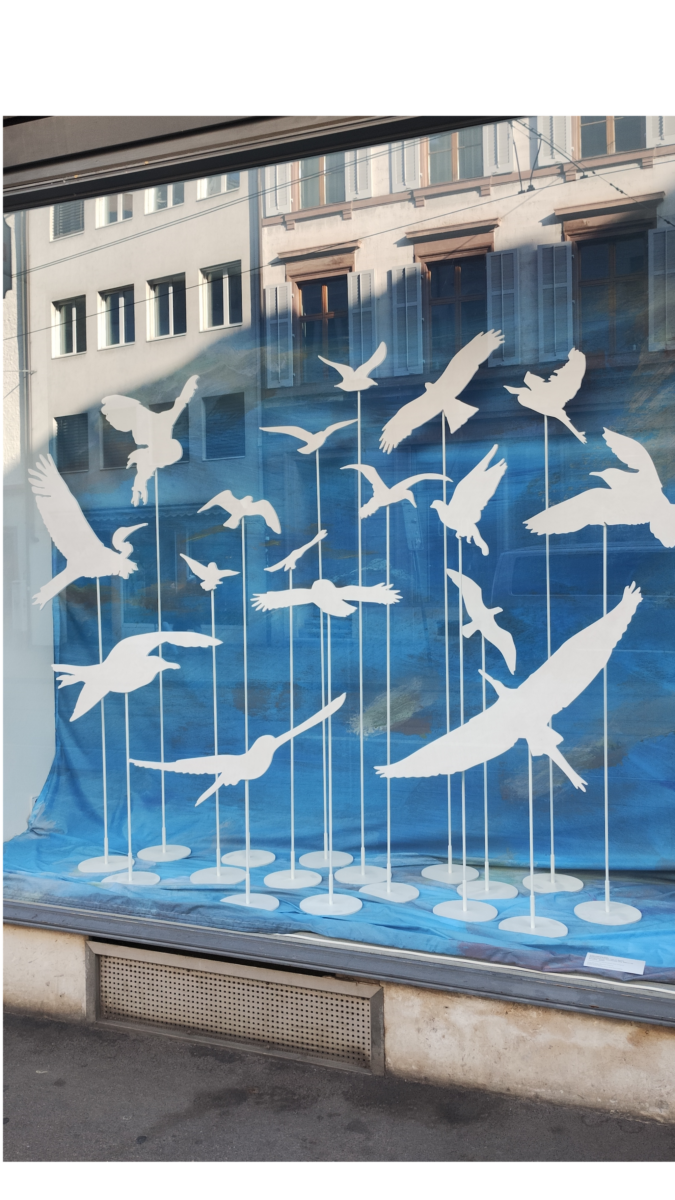
A flock of differently dancing bird silhouettes, painterly in ghost white like apparitions floating free from an ornithology guidebook, each sours wings splayed yet frozen before a silken sea-sky, some hyper zoomed in detail from an early modern painting. Not a Twitcher, I think I see doves or pigeons, seagulls, an owl, a heron and more. Diel’s is a strange bird formation, one appearing even stranger situated in the streets of a city, I mean when did you last see a heron outside a Starbucks? I am drawn to the installation’s title, Imagination Increases the Value of Reality, what would reality be if herons did exist outside Starbucks? Diel’s work is fun, super simple, and rife for interpretive play. Rather than imagination, what I think lies at the core of this artwork is an act of re-imagination, I suspect some time ago, in an age before Starbucks sprung up with city construction and concrete, herons, or other ‘odd’ animals, once did inhabit the landscape of Basel. Following this line of thought, Imagination Increases the Value of Reality, does not ask us to think anew but to refabulate from a historically informed point of view, to speculate on the state of the natural world if all the animals we know and feel at home with become nothing but bookish ghosts.
STOP 6) Lara & Noa Castro Lema, Cunha Fosa a Cada Lado, 2025 PSP Swiss Property, Kirschgartenstrasse 12

There is something sinister about Lara and Noa Castro Lema’s, Cunha Fosa a Cada Lado. A group of witchy bodies floating, bodiless, upon steel poles, their anthropomorphic presence given through the woollen jumpers they don and the rudimentary skirts that slip from their waistless waists; a dribble of turquoise organza leaks from each figure’s headwear, a fishy allusion to the Cycloptic strength of the natural world perhaps. I want to know more about these presences but I do not have an in — Google translate doesn’t help much: from the Portuguese Cunha Fosa a Cada Lado translates as ‘Wedge Pit on Each Side’. Positioned in the office window of a Swiss real estate company, I want to speculate that these moon beings stand as effigies symbolic of nature’s quiet resistance to economic encroachment. On the other hand, these figures could just be costumes, lingering in wait for a bodily activation, referential of how humans haunt earthly life.
STOP 7) Paula Santomé, Glass Goddesses, 2025 MüKi Chaussures d’Enfants, Münsterberg 14

Santomé’s installation toys with ideas of femininity; specifically the quasi-religious voyeurism often applied to the female body and how this logic is passed across generations. The placement of Glass Goddesses seems wholly fitting, not only to the critical impulse I read in the artwork but to the craft of its construction. Glass Goddesses is a tobacco-toned stained glass panel positioned in a shop selling handmade childrens shoes, the allusions to craft traditions is obvious I hope. Depicting three female figures, bodybuilders I want to suppose, Santomé’s three graces pose showing off their muscular tone. Two appear in the oblique, I see them from behind, framing a central protagonist who stands with feet and hands out-turned. She seems ready to perform, to address me face on. Thinking about the stereotypical function of female forms in shop windows, appearing as dumb mannequins, photoshopped billboards and the like, Santomé’s strong women co-opt a position of voyeuristic desire, transforming a space of objectification into one of semi-divine empowerment. Here craft and concept align completely, adding to one another, providing a direct indication to the avant-garde potentiality of public windows: I am left wondering how many children trying on shoes might now want to become a bodybuilder or at least feel that their future being can be more than what is heteronormatively sold on the corporate high-street.
With the rise of digital culture/commerce shop windows, especially those existing outside of homogenous city centres, can be seen as forms in danger. Rather than succumbing to this globalising threat, the commissions constituting Shop Windows in The City each afford a moment of slow-looking, affective witnessing in other words. To go large with my personal interpretations, staring at these displays, reading art as it infuses Basel’s city space, I find it fitting to note how I glimpse myself as a ghostly body deep within the being of each artwork, it’s like I am coeval with their glassy appearance and dare I say imperilled by the same cheap gods.
Shop Windows in The City, until 2nd March 2025, is part of the exhibition Fresh Window. The Art of Display & Display of Art an exhibition at the Museum Tinguely, Basel, until 11th March 2025.
Thank you to Basel Tourism for supporting my trip.

